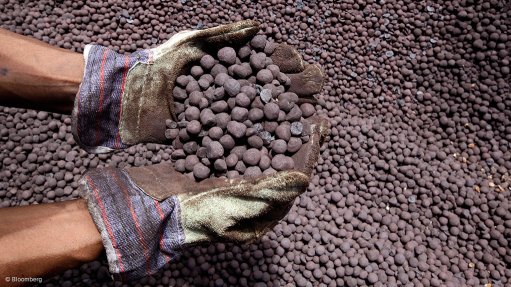Marrakesh Agreement: 25 years on
April 15 is a day steeped in history. Well, you can argue that this is true of every day. What possibly makes April 15 a bit unique is that all the major events that happened on this day are general knowledge, unless you are not from this planet.
On this day in 1865, US President Abraham Lincoln died after having been shot the night before by John Wilkes Booth. In 1912, the Titanic sank off the Newfoundland coast in the world’s most tragic and infamous maritime tragedy. More than 1 500 people lost their lives as the band played on. In 1955, Ray Kroc opened the first franchised McDonald’s in Des Plainesl. Then a personal favourite, in 1964, Gail Wise, of Chicago, became the first person to buy a Ford Mustang – two days before the car officially went on sale in the US.
In South Africa, in 1912, the Union of South Africa issued its first weather forecast. In 1996, South Africa’s Truth and Reconciliation Commission began its formal hearings into human rights violations.
If you are questioning what this has to do with trade . . . it has nothing, really. The year that does, however, is 1994. That is when the representatives of more than 120 countries gathered in Marrakesh, Morocco, to sign what has been described as the “greatest trade agreement in history”.
The agreement led to the establishment of the World Trade Organisation (WTO), creating a new global framework for liberalising trade in goods and services, protecting intellectual property rights and easing trade tensions through a new dispute resolution mechanism.
The texts signed in Marrakesh at the meeting of Trade Ministers is popularly known as the Marrakesh Agreement. The agreement was the result of the 1986 to 1994 Uruguay Round negotiations, described as an unprecedented endeavour in international trade that produced more than 60 agreements and decisions totalling 550 pages and more than 20 000 pages of agreements and schedules. This makes it one of the largest treaties ever signed. The Uruguay Round was the eighth round of multilateral trade negotiations conducted within the framework of the General Agreement on Tariffs and Trade (GATT). The signing of the Marrakesh Agreement resulted in the transformation of the GATT into the WTO on January 1, 1995.
The creation of the WTO marked the biggest reform of international trade since World War II, realising the failed attempt in 1948 to create the International Trade Organisation. It also completed the trilogy of international organisations, with the others being the International Monetary Fund and the International Bank for Reconstruction and Development, commonly known as the World Bank.
At the signing ceremony of the Marrakesh Agreement, Peter Sutherland, the fourth GATT director-general and first WTO director-general, delivered a two-page speech, the opening paragraph of which was as follows: “Few trading caravans can have viewed this beautiful city with as much pleasure – and as much relief – as ours does. But then very few trading caravans were on the road for more than seven years, and none carried such a priceless cargo. This week, you, as Ministers, will sign the greatest trade agreement in history, one whose benefits span entire continents and a wide range of trade sectors alike.”
Sutherland concluded his speech thus: “If I had to sum up the achievement of the Uruguay Round in one word, I would say ‘opportunity’. The agreements you will sign here this week mean opportunities to expand trade, economic growth and employment. They mean opportunities to promote sustainable development. And they also mean an opportunity – the most significant one we have had for 50 years – to build a new basis for global economic cooperation.”
As a parting thought, over its 47 years of existence, the GATT had four directors-general and, in the 24 years since its founding, the WTO has had six directors-general. Of great concern is that not a single one has been from the African continent.
Comments
Press Office
Announcements
What's On
Subscribe to improve your user experience...
Option 1 (equivalent of R125 a month):
Receive a weekly copy of Creamer Media's Engineering News & Mining Weekly magazine
(print copy for those in South Africa and e-magazine for those outside of South Africa)
Receive daily email newsletters
Access to full search results
Access archive of magazine back copies
Access to Projects in Progress
Access to ONE Research Report of your choice in PDF format
Option 2 (equivalent of R375 a month):
All benefits from Option 1
PLUS
Access to Creamer Media's Research Channel Africa for ALL Research Reports, in PDF format, on various industrial and mining sectors
including Electricity; Water; Energy Transition; Hydrogen; Roads, Rail and Ports; Coal; Gold; Platinum; Battery Metals; etc.
Already a subscriber?
Forgotten your password?
Receive weekly copy of Creamer Media's Engineering News & Mining Weekly magazine (print copy for those in South Africa and e-magazine for those outside of South Africa)
➕
Recieve daily email newsletters
➕
Access to full search results
➕
Access archive of magazine back copies
➕
Access to Projects in Progress
➕
Access to ONE Research Report of your choice in PDF format
RESEARCH CHANNEL AFRICA
R4500 (equivalent of R375 a month)
SUBSCRIBEAll benefits from Option 1
➕
Access to Creamer Media's Research Channel Africa for ALL Research Reports on various industrial and mining sectors, in PDF format, including on:
Electricity
➕
Water
➕
Energy Transition
➕
Hydrogen
➕
Roads, Rail and Ports
➕
Coal
➕
Gold
➕
Platinum
➕
Battery Metals
➕
etc.
Receive all benefits from Option 1 or Option 2 delivered to numerous people at your company
➕
Multiple User names and Passwords for simultaneous log-ins
➕
Intranet integration access to all in your organisation


















